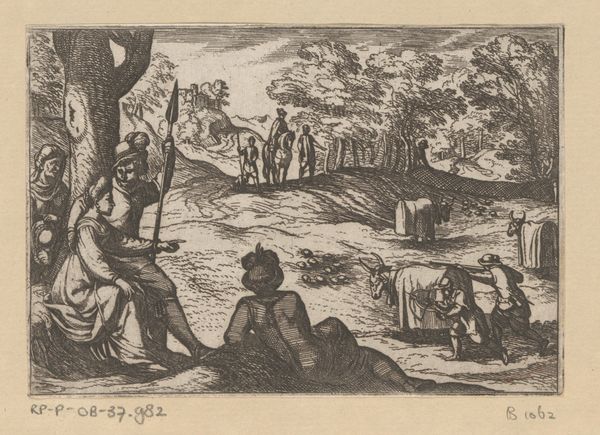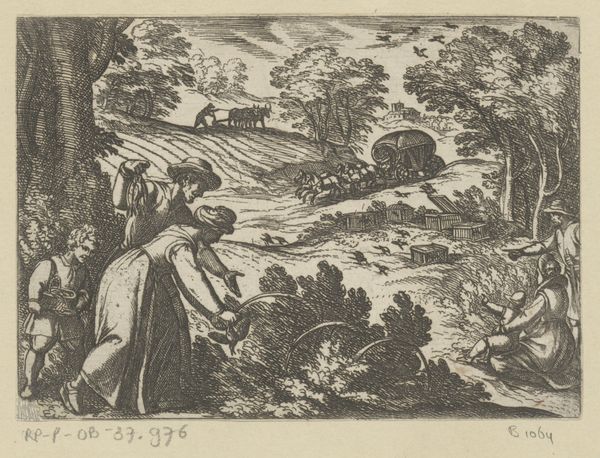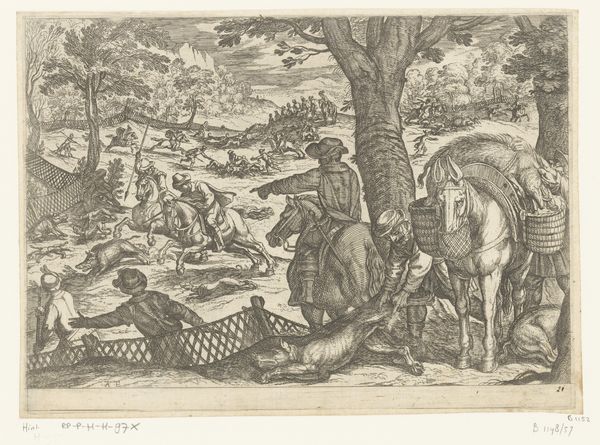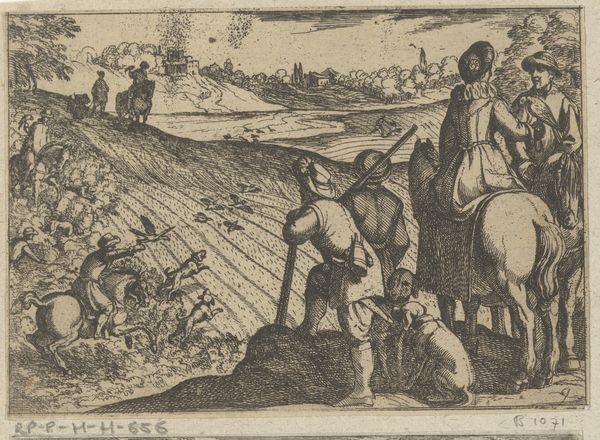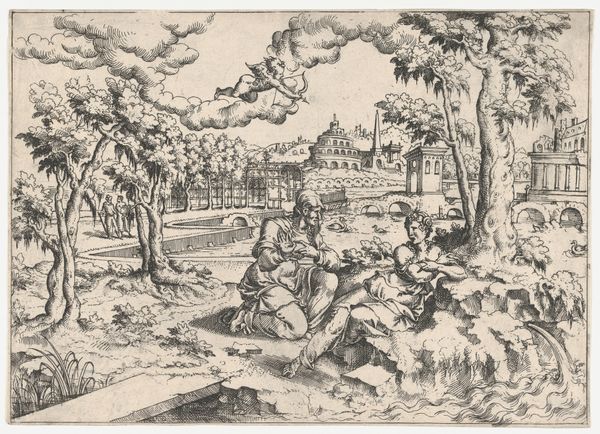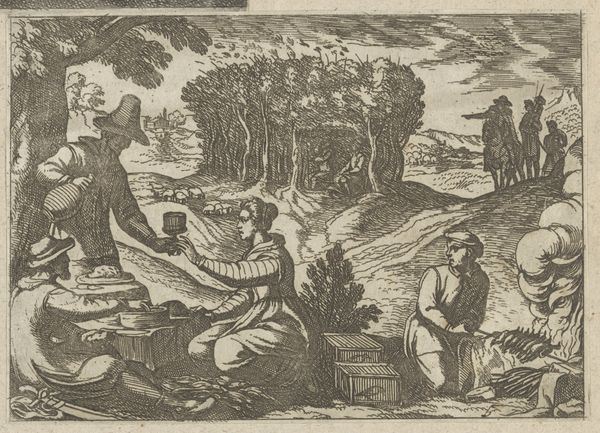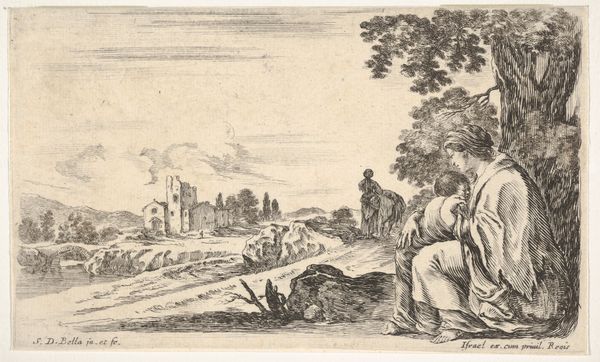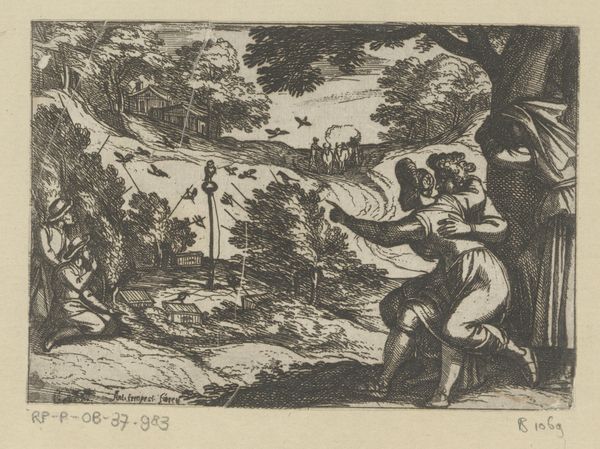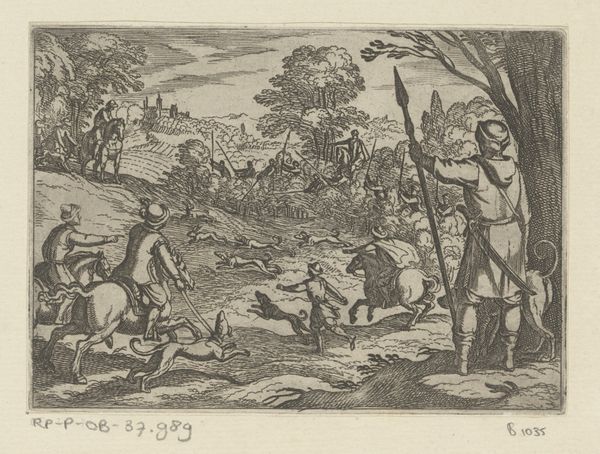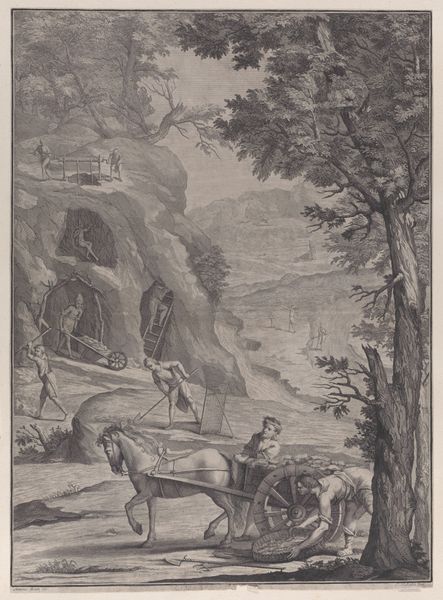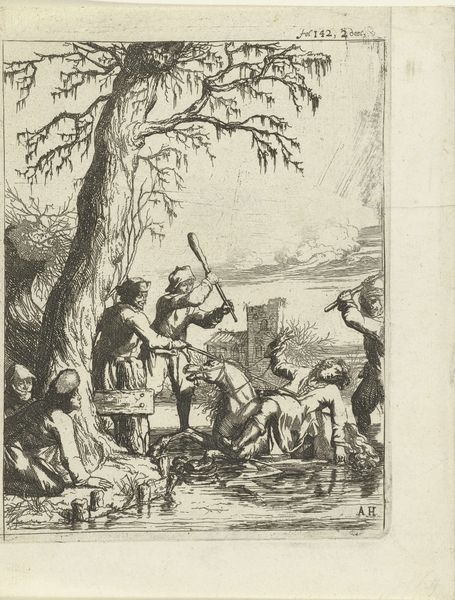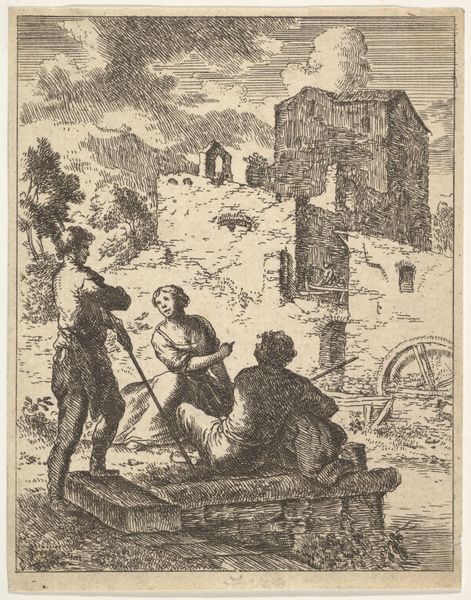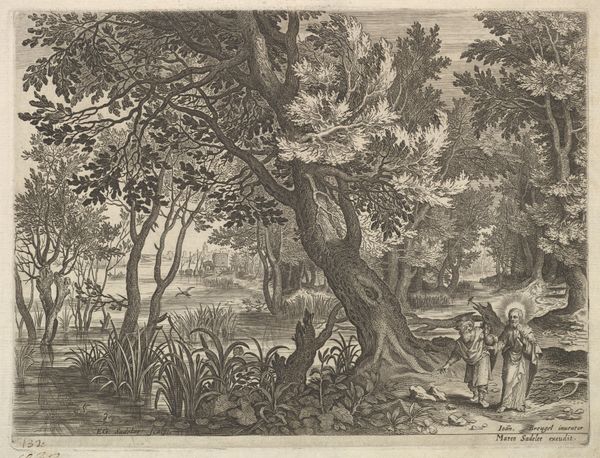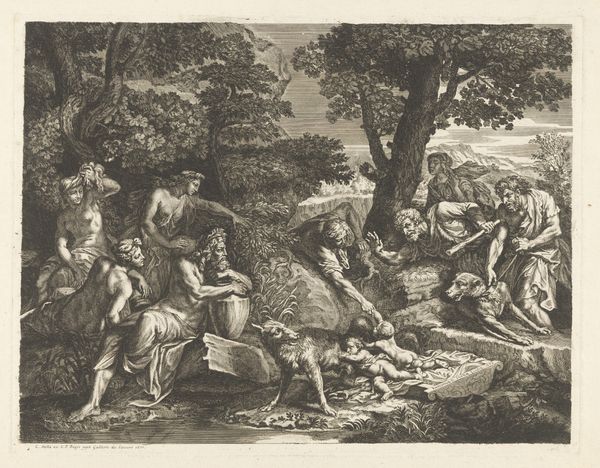
print, etching
#
narrative-art
# print
#
etching
#
landscape
#
mannerism
#
figuration
#
genre-painting
Dimensions: height 101 mm, width 140 mm
Copyright: Rijks Museum: Open Domain
Editor: Here we have Antonio Tempesta's "Hunters Catching Small Birds in the High Grass," an etching from 1598. The composition is just fascinating, like a tapestry of textures and tiny figures bustling about. How do you approach a work like this, with so much going on visually? Curator: I find this print especially intriguing. First, consider the deliberate layering; the foreground's active figuration leads the eye into a receding landscape populated with carriages and livestock. Semiotically, we can ask, how do these visual strata function in relation to one another? Editor: So, you're seeing it as almost a coded image? What's being communicated through those layers? Curator: Precisely. The etcher's lines establish clear differentiation in tonal value that provides legible shapes within the composition. For example, the texture of the “high grass” creates an interplay with the clustered human figures, creating visual rhythm. The figures have more substance by having areas of heavy line to render the illusion of clothing, where the foliage has minimal, uniform marks. Observe the relationship of the figures who seem to be in the hunting group on the left as they stand, crouch, and are partially visible in the fields of "high grass." Note also the more ornamental treatment given to the figures on the right, with elaborate hair and clothing, creating a very interesting contrast with their environment and other hunters. It establishes a dichotomy of work and ornament. Editor: I see now. The figures, while small, anchor the foreground. The use of texture directs us through the plane in its deliberate patterns. Is this typical of the period, to so deliberately construct the viewer's gaze? Curator: In many respects, yes. It represents an ambition towards creating an overall decorative schema as well as one with pockets of detail within a natural setting. Considering this through a Formalist framework lets us identify the print's method of communicating. What do you think of this image now? Editor: I initially found it overwhelming, but now appreciate the careful structuring. Thanks, I hadn’t considered how much visual direction a print like this could provide!
Comments
No comments
Be the first to comment and join the conversation on the ultimate creative platform.
